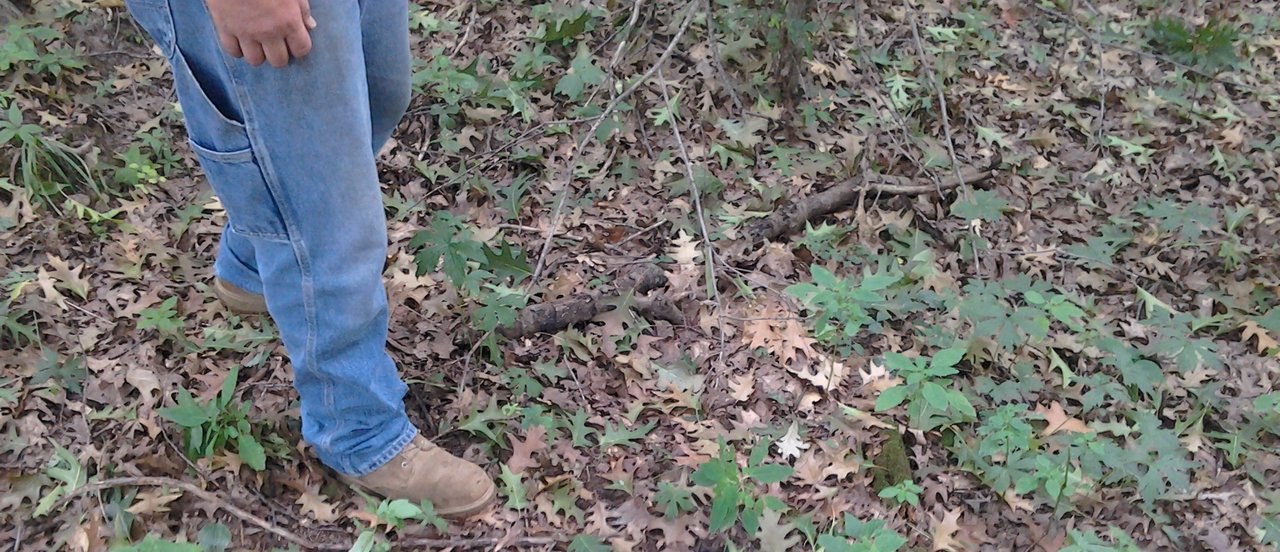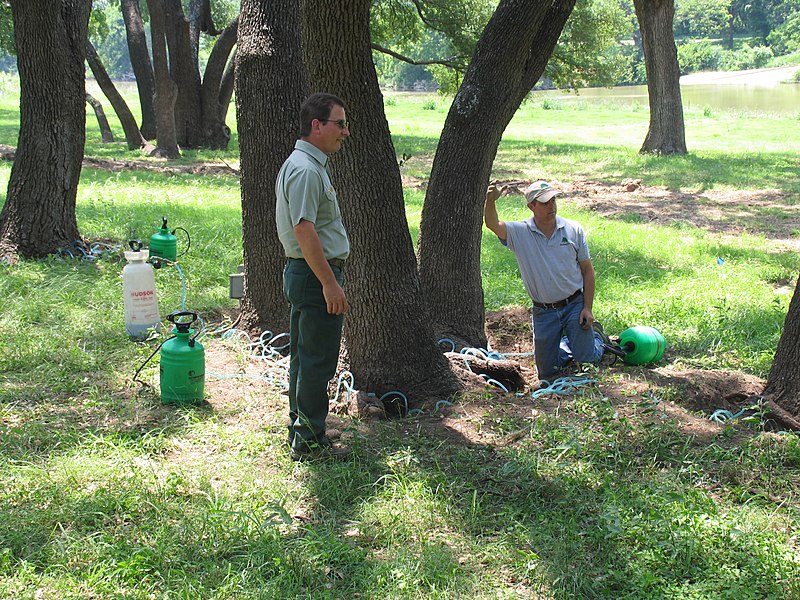
Oaks are a beloved tree in San Antonio, and for good reason. They come in many varieties, are mostly evergreen, and are very hardy. Unless that is, they’re infected with oak wilt. Like people, trees can also suffer from disease and illness. Oak wilt, hypoxylon cankers, root rot, and bacterial leaf scorch are a few of the common issues that plague San Antonio trees.
Oak wilt, in particular, can be devastating if not caught in time. A live oak can die within three to six months of the onset. And a red oak will wither within four to six months. Besides killing the tree it has infected, the oak wilt fungus can spread to other trees. Blame the sap-feeding beetles that transport the fungal spores from one tree to the next. The disease can also spread through the root system below ground, through interconnected roots.
As devastating as this may sound for an infected tree, there are ways to treat oak wilt and other diseases common in San Antonio trees.
Air Excavation and Tree Injection

Air excavation is a way to get to the roots of the tree without causing further damage. A trained arborist shoots the pressurized air at the roots to better diagnose the problem. They can sometimes stop oak wilt and Dutch elm disease from spreading by uncovering the root grafts. This process also helps loosen compacted soil or to prune roots before they reach your home’s foundation.
There is no cure for oak wilt. But an arborist can stop it from spreading by injecting the roots and limbs with a fungicide called propiconazole. This will extend the life of the tree and stop the fungus from spreading above ground.
Trenching
Trenching segregates the roots of the infected tree so that it cannot spread the fungus. Trenching is usually 4 feet deep, and it severs the roots of the infected tree. Tools used for may include a trenching machine, rock saw, or ripper bars.
Proper Pruning

Air excavation and trenching are things that require expert help. But DIYers can go out on a limb and protect their trees by pruning any infected or stressed branches. But improper pruning can do more harm than good. “Don’t allow the trees to be wounded during the spring, Feb. 1 through the end of June,” says Dr. David Appel, professor of biological control at Texas A&M. “That is when the beetles that spread the fungus are actively flying and spreading the pathogen from diseased red oaks to the fresh wounds on healthy trees.”
Other Common San Antonio Tree Diseases
Hypoxylon cankers

This disease is apparent by the dead lesions that develop under the bark of the tree and ultimately cause white-rot decay. Not only can this kill a tree, but it also compromises its structural integrity, which makes it dangerous if left standing.
Root rot
Blame this problem on soggy soil, and soil fungus. If tree roots are too drenched in water, they can’t absorb oxygen. Oxygen starved roots will rot, die, and spread the decay to other roots. Fungus such as phytophthora, Rhizoctonia, and fusarium are also potential causes, though not as common.
Bacterial leaf scorch

Leaf scorch is sometimes mistaken for oak wilt. However, this is a different fungus. It’s spread by insects such as xylem-feeding leafhoppers and spittlebugs. This disease affects oaks, as well as elms, sycamores, mulberry trees, and maples.
Not sure if your tree is suffering from oak wilt or something else? You can take a sample of the diseased tree to the Texas Plant Disease Diagnostic Lab (TPDDL) with TAMU AgriLife Extension in College Station.
Dr. David N. Appel Teaches courses on plant pathology and plant disease diagnosis as well as forest protection at Texas A&M University. The goal of his research is to improve our understanding of the epidemiology of plant pathogens so we can make better disease management decisions.
Main image credit: Wood geek, CC by SA 4.0.





